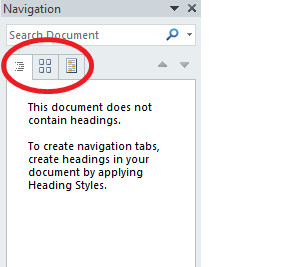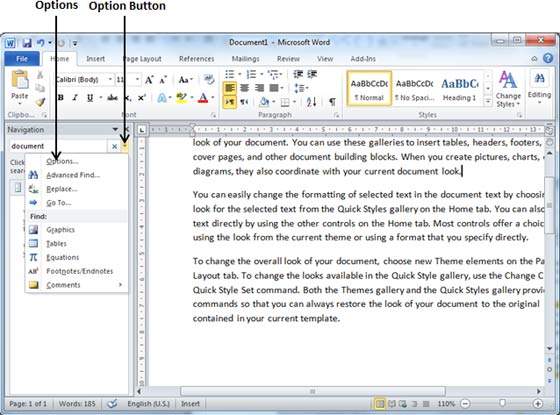
The functionality is similar to the thumbnail pane in earlier versions of Word. In the page view all the pages in the document are displayed as thumbnail images. The old Document Map could fit more headings on the screen while the Navigation pane looks nicer for demonstrations but doesn’t show as much information to users. In one way the new Navigation pane is a step back in design. This view is an expanded version of the ‘Document Map’ view that’s been in Word for many versions (View | Document Map).

There is also a shortcut Ctrl + drag to drag and make a copy of the required headings along with the content. But you can use the default Ctrl + C and Ctrl + V to copy and paste. You can choose desired section and it’s content to print as well.Īlthough there is option to select desired heading and content there is no shown option to copy and paste it. Warning: when you select to delete any heading then all the content including all the subheadings under that particular heading is deleted. Note that Word is changing the Heading style which is linked to the outline level – not the outline level alone.Īlso you can add new headings or subheadings. For example you can promote a heading from Heading 3 to Heading 2 or demote it to Heading 4. As shown in the below screenshot you can promote or demote heading levels by simply clicking on the respective button. To display this menu right click on any of the heading in the navigation pane. There are also other options to work with the headings. When you do this the heading and the entire block of text between that heading and the following heading is moved to where you place it. You can drag and place the headers in different positions if you wish to change the structure of the document. By clicking the left arrow button beside the Heading title you can collapse or expand the headings list. This makes it easier to navigate through huge document containing many pages. (TOCs are hyperlinked by default.On whichever heading you click in the navigation pane corresponding page is displayed in the document. It's too bad that Word doesn't let this happen.Ī frame would have to be used in place of a table, so it wouldn't be helpful in your case.Īre you saying that you are creating a glossary using heading styles? You could create a table of contents if you want links to the terms. In separate paragraphs) without using a table? I like the table format because it's easy to make insertions, it locks everything in place, and you can use header rows. a defined term and definition displaying side by side instead of on top of each other Does Word 2013 do this? Are there suggestions to achieve what I'm doing (i.e. Heading, but you've indicated that Word just won't display headings in a Table. It would be great to have the defined terms display underneath the parent I'm trying to create a glossary, with the term that's defined in the left column and the definition in the right column of a table. I'm not sure what Stefan's comment above about text frames is suggesting - are you saying to insert the entire style text in successive frames, or inside the table? I tried this and can't get the frame to behave inside the table - it either

I would much prefer to use the Navigation Pane rather than this Table of Contents method. These styles so that I can easily navigate through my document. In earlier verisions of Word, I would build a customized Table of Contents at the top of my document using We have a group of customized styles called A-Head, B-Head, C-Head, and D-Head. Is I must use customized headings to submit my chapters to a publisher. I love the new Navigation Pane in Word 2010, especially the Heading view where I can see all my headings to the left of my document and easily move from one heading to another. I use Word to write long, 70-page chapters with multiple leavel headings. On Wed, 14:19:20 +0000, JeanNGeorgia wrote:Īny chance I can modify the Navigation Pane so that it uses customized styles in the pane rather than, or in addition to, Heading 1, Heading 2, and Heading 3? That would make me extremely happy and my life much easier!!! Headings with the special styles, with indentations according to the Levels, or some other arrangement.) The Nav pane will show the (The built-in styles Heading 1, Heading 2, and Heading 3Īre assigned levels 1, 2, and 3. Outline Level to reflect where that style sits in the heading Right-click it and choose Modify in the Modify dialog click theįormat button and choose Paragraph.


 0 kommentar(er)
0 kommentar(er)
